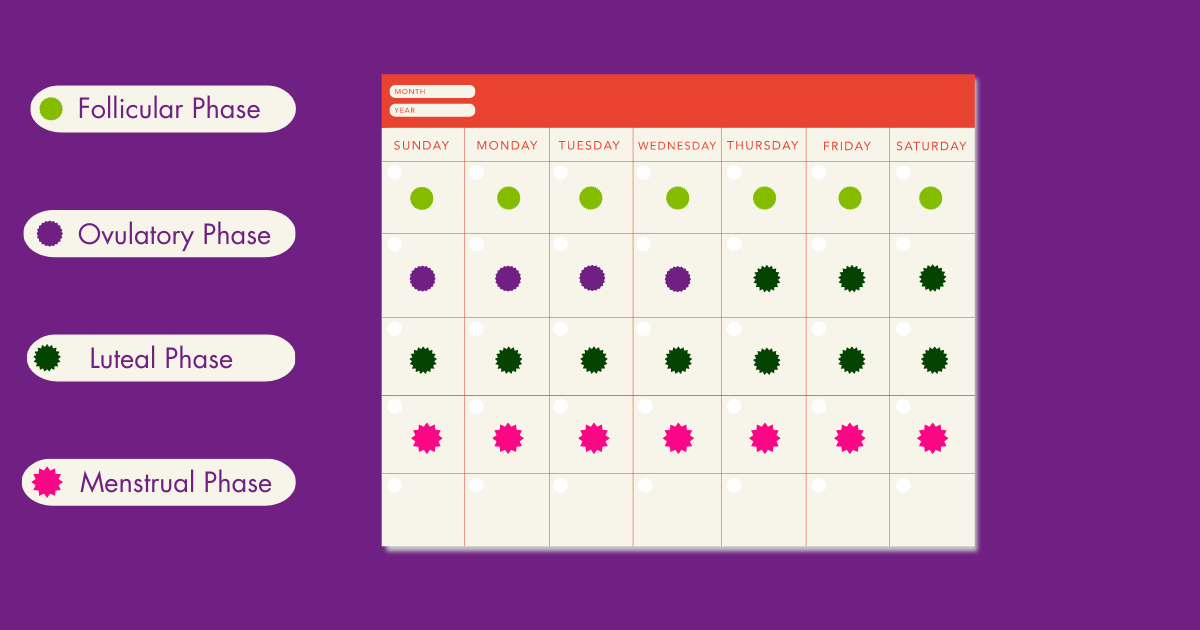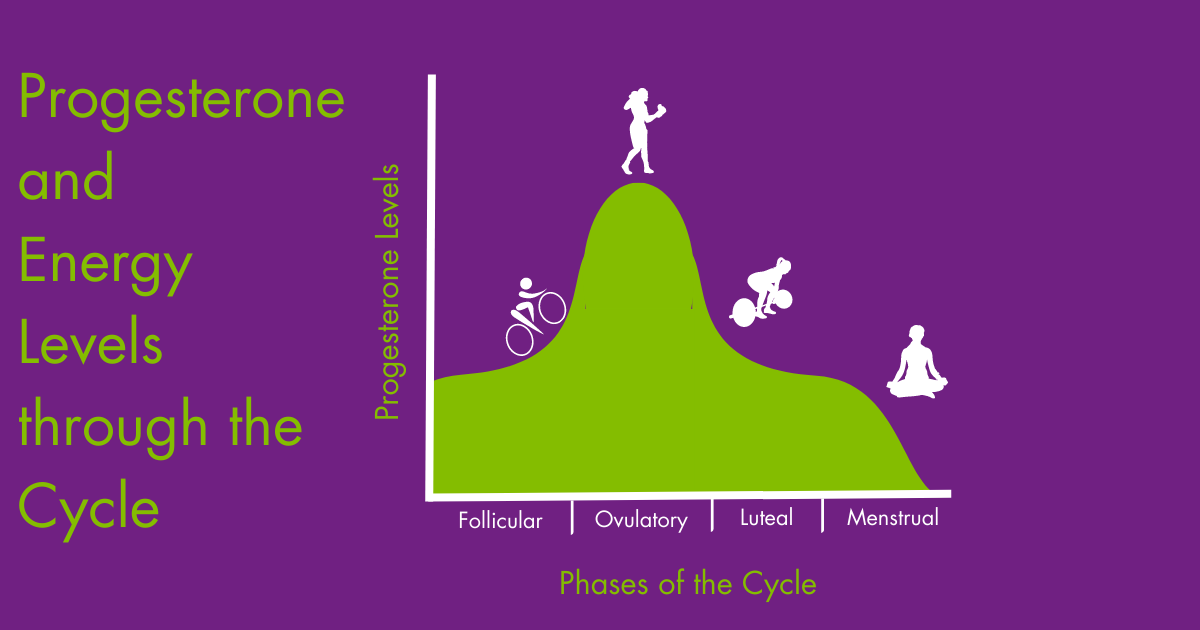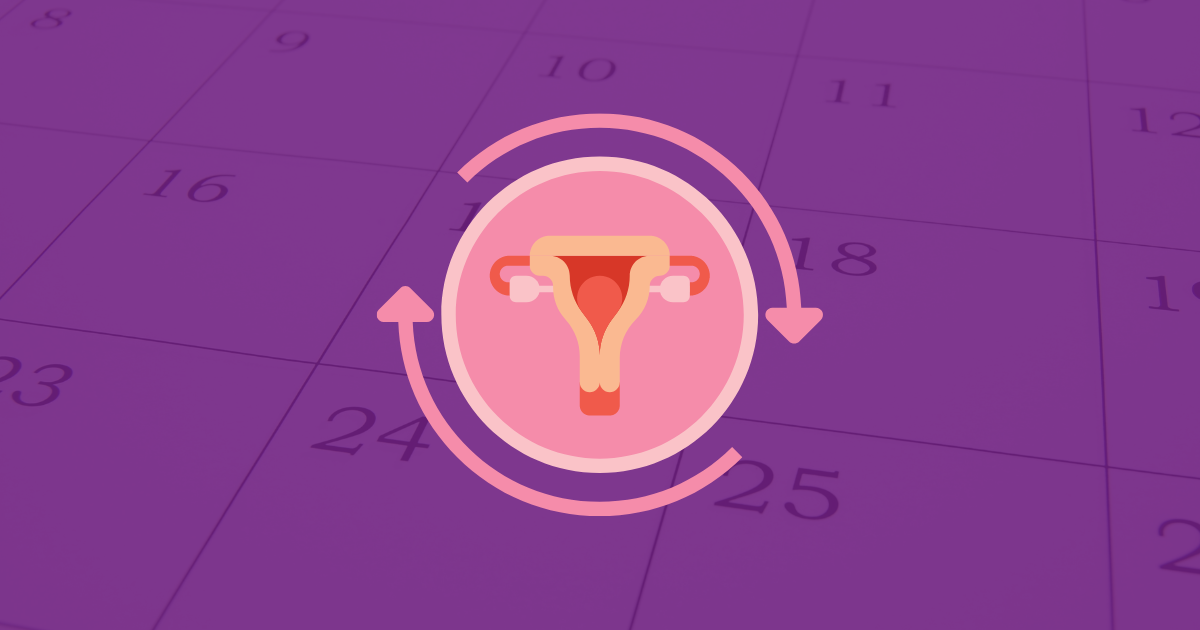For those with a uterus, in middle school, you got the talk about your menstrual cycle, more commonly referred to as a period. The three to seven days when the uterine lining sheds, bringing PMS symptoms ranging from cramps to mood swings. What most health classes didn’t go on to teach was that the menstrual cycle is not the entire cycle.
A woman with female anatomy experiences a cycle of approximately 28 days and four total phases. These four phases include the follicular, ovulatory, luteal, and menstrual phases. Each phase impacts energy levels and requires different dietary nutrients to best support it.
The Follicular Phase
After the bleeding has stopped from the menstrual phase, the follicular phase lasts 7 to 10 days. This phase focuses more on regrowing the recently shed uterine lining to prepare for the potential implantation of a fertilized egg. During this time, hormone levels will remain relatively constant throughout the earlier days and begin to rise towards the end. Energy levels will increase, allowing the body to endure more challenging activities, so it’s time to try new ways to stay active, whether through a traditional gym exercise session or an outdoor activity.[1]
To best support the body during this time, it’s best to include more of the following in your diet:
- Whole grains (wheat, barley, and rye)
- Fruits (plums, pomegranates, and citrus fruits)
- Starchy vegetables (peas, sweet potatoes, and carrots)
The Ovulatory Phase
The ovulatory phase lasts about 3 to 4 days. In this phase, a rise in estrogen levels has caused an egg to be released to reach the area of fertilization prepared during the follicular phase. Due to the presence of the egg, there is a higher chance of becoming pregnant at this stage. Estrogen and energy levels are the highest during this phase, increasing the likelihood of wanting to engage in social activities and begin new projects. For workouts, this is a perfect time to engage in high-intensity training in the form of cardio or boxing.
During the ovulatory phase, eat foods with more:
- Essential fatty acids (avocado, flax seeds, and pumpkin seeds)
- Antioxidants (berries, spinach, and eggplant)
- Vitamin D (soy milk and mushrooms)
- Folic acid (red lentils, peanuts, and dark leafy greens)
- Low glycemic index carbohydrates (amaranth, brown rice, and quinoa)

The Luteal Phase
The luteal or premenstrual phase lasts up until the start of menstruation, ranging from 10 to 14 days. Progesterone and testosterone levels, in particular, will rise to reach their peak halfway through and then halt production. For energy, this is not an ideal time to begin projects but a time to finish what you have started earlier in the cycle. For workouts, the phase splits into two sections; the first half can focus more on strength training and the second on flexibility.[2]
Dietary recommendations during the luteal phase include eating foods high in:
- Protein (chickpeas, soybeans, and tofu)
- Healthy fats (peanut butter, pine nuts, and walnuts)
- Calcium (almonds, winter squash, and collard greens)
- Magnesium (wheat, kale, and okra)
The Menstrual Phase
The final phase is the menstrual phase, lasting 3 to 7 days, beginning on the first day of bleeding. Energy levels will be low, making this a better time for self-care and recovery. Progesterone levels will also drop iron levels due to the shedding of the uterine lining. The body can be more susceptible to injuries if engaging in high-intensity workouts, so it’s best to use this time to focus on gentle movements such as walking, mat pilates, or yoga.
During menstruation, recommendations share eating foods high in:
- Iron (dark chocolate, kidney beans, and lentils)
- Dark leafy greens (bok choy, dandelion greens, and arugula)
- Healthy fats (olive oil, hemp seeds, and chestnuts)
- Protein (spelt, edamame, and oats)

Cycle-Syncing Method
Alisa Vitti, functional nutrition and women’s hormone expert and author of In the Flo created the Cycle Syncing Method.[3] Using the basic timeline of the different phases, an individual can plan their cycle based on optimal energy levels for particular activities.
Understanding how hormones change and flow throughout the 28 days gives those with a uterus more knowledge on how to best support their body at each phase to reach their goals in a manner that preserves energy. Getting started can be overwhelming, and using a period tracking app can help with any cycle-syncing confusion. It’s also helpful to remember to adapt to the changes that occur and to always listen to your body when learning about syncing your cycle.
![]()
Try out the cycle-syncing method for yourself and see how it changes your day-to-day life.
Choosing a healthy plant-based and vegan diet is most beneficial when it comes to:
-
Higher levels of energy;
-
Improved sleep;
-
Aids in energy and overall happiness;
-
Provides a sense of comfort and relief;
-
Could prevent major diseases such as obesity and diabetes;
-
Accomplish weight-loss and management; and
-
Improves mental and cognitive functioning.
There are really no excuses not to try healthier habits in your everyday life. If you are a man or woman looking for specific benefits of adopting healthier habits or just want to know about the general healing properties of herbs. Please remember to comment or post any health questions, or contact us directly!
Also feel free to share any of your favorite recipes to make and share it with the Assuaged community on our ➡️ Share A Recipe ⬅️ page!











/Be-Your-Highest-General-Hemp-C-B-D-Muscle-Rub-Stick-Assuaged-Banner.jpg?width=960&height=180&name=Be-Your-Highest-General-Hemp-C-B-D-Muscle-Rub-Stick-Assuaged-Banner.jpg)







